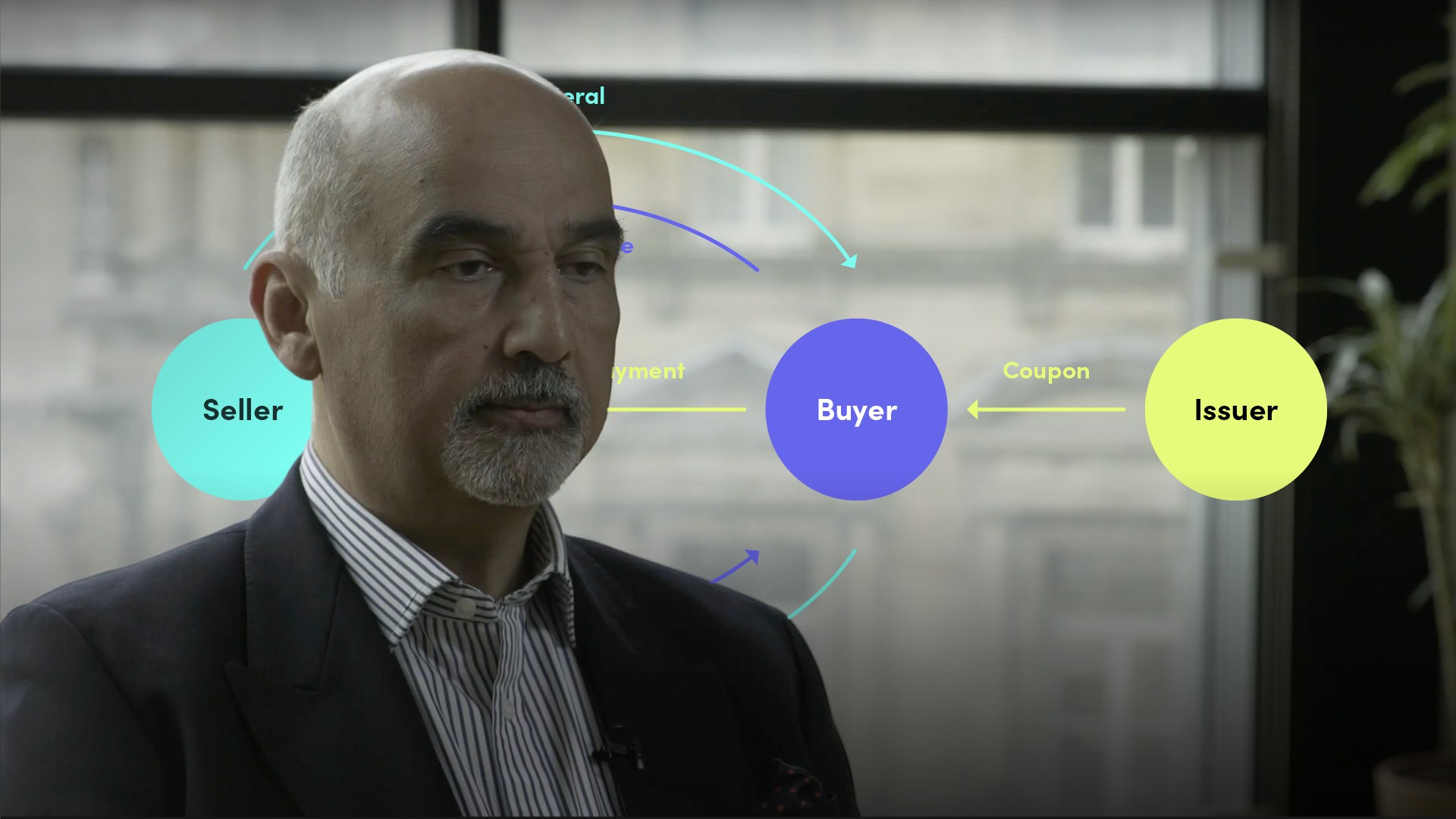
Repo Collateral

Richard Comotto
30 years: Money markets
In this video, Richard talks about collateral, variation margining of collateral, the difference between general collateral and specials and some repo terminology.
In this video, Richard talks about collateral, variation margining of collateral, the difference between general collateral and specials and some repo terminology.

Repo Collateral
15 mins 20 secs
Key learning objectives:
The types of assets used in repos
Define the common terms associated with repos
Differentiate between classic repos and buy/sell backs
Overview:
The assets used in repos can range from government securities to corporate bonds and mortgage-backed securities. Differences in repos can originate from the payments on collateral or the collateral itself that is used.
What assets can be used as collateral in a repo?
There are three key characteristics that are generally seen as being required of good collateral:
- It needs to be as free of credit risk as possible
- The collateral needs to be as liquid as possible, by which we mean it should be easy to sell with little or no loss in value, even in stressed markets
- The collateral should be as free as possible of what is called “wrong-way risk”. This is the correlation between the value of the collateral and the creditworthiness of the issuer of the collateral
These assets most usually involve government securities such as treasury bills, notes and bonds. Repos against assets other than government securities are referred to as “credit repo”. These could include Mortgage-Backed Securities, Asset-Backed Securities, corporate bonds, emerging market securities and equity. In between government and credit collateral is so-called “high grade” collateral, consisting of Sovereign, supranational and agency securities. For regulatory purposes, the definition of good collateral has been formalised by the Basel Committee on Banking Supervision in the form of so-called “High Quality Liquid Assets”.
What is some common terminology for repos?
The first leg of a repo is called the Purchase and the second leg is the Repurchase. But in the market, dealers often talk about start and end legs.
The Purchase takes place on the Purchase Date, which is the repo market term for the value or settlement date and the second leg takes place on the Repurchase Date, which is the maturity date.
Usually, the assets being bought or sold are just called collateral.
The two sides of a repo are sometimes distinguished by calling the Seller’s side the “repo” and the Buyer’s side the “reverse repo”. The Seller “repos out” collateral and the Buyer “reverses in” collateral.
What is the difference between a repurchase transaction and a buy/sell back?
The difference between these two types of repos is no longer significant. Both species of repo do the same job, that is, they act as secured loans. Both provide collateral by title transfer.
The difference comes down to one thing: what happens when a coupon, dividend or other income payment is made on collateral.
With the advent of documented buy/sell-backs, it may have been expected that buy/sell-backs would have followed repurchase transactions in using manufactured payments to manage income payments on collateral. But, because many jurisdictions using buy/sell-backs had legal concerns about manufactured payments, it was judged simpler to retain the existing mechanism of reducing the repurchase price instead.
So the key difference between a repurchase transaction and a buy/sell-back is that the former makes a manufactured payment in response to an income event on collateral, whereas the latter reduces the repurchase price.
What is variation margining?
If the value of collateral falls, the buyer can make a variation margin call on the seller. If the value of the collateral rises, the seller can make a variation margin call on the buyer. Such margins are typically calculated to eliminate the net exposure of the whole portfolio of repos outstanding between two parties under the same legal agreement. Variation margins are not usually called for individual repos.
Parties transacting repos should, for each repo, regularly revalue the collateral they have given or taken, and calculate how much cash they owe or are owed under each transaction with another party. Because a single variation margin is usually called for an entire portfolio of repos, it is not automatically returned when individual repos mature. Variation margin given to another party has to be called back when a variation margin call is subsequently made on the other party.
Variation margining is an operationally intensive process. Firms who do not have or do not want to invest in the required operational capability can outsource their variation margining, as well as other collateral management tasks, including the initial selection of collateral, to a third party called a “triparty agent”.
What is the difference between general collateral and specials?
A general collateral repo can be described as a cash-driven repo, that is, the objective of one party is to borrow cash and the objective of the other is to lend cash. The buyer will not be concerned to receive a particular piece of collateral such as a specific bond issue and in fact will probably be willing to accept any one of a number of similar bond issues without changing the repo rate.
The specials market is driven by the supply and demand of specific securities. Excess demand and/or insufficient supply of a particular issue means that aspiring buyers have to offer cheap cash to acquire that issue. In other words, these issues will trade at their own repo rate below the GC repo rate. When this happens, that issue is said to have gone “special”.

Richard Comotto
There are no available Videos from "Richard Comotto"

